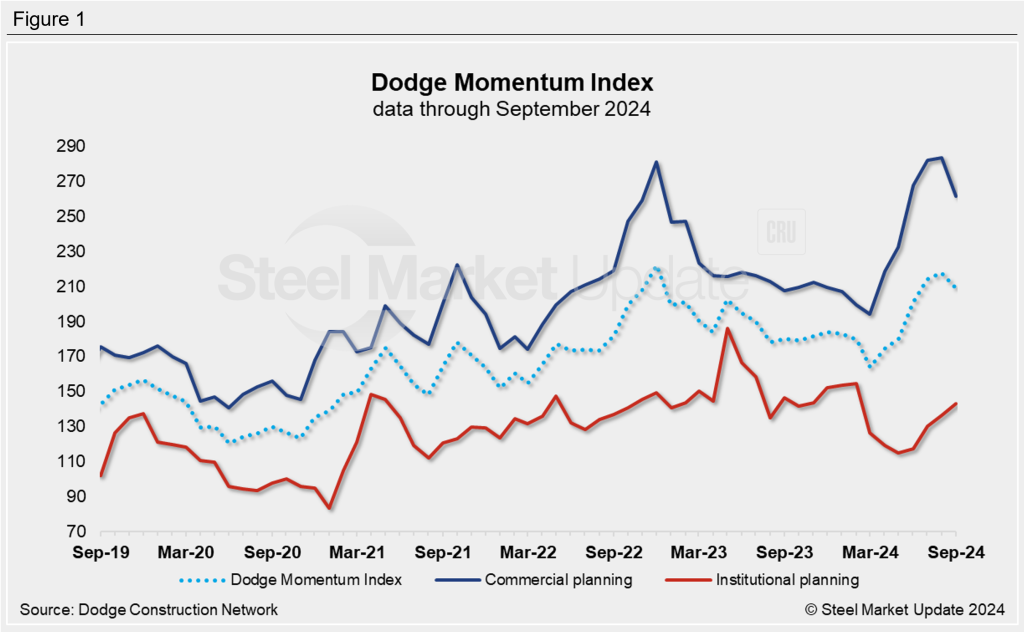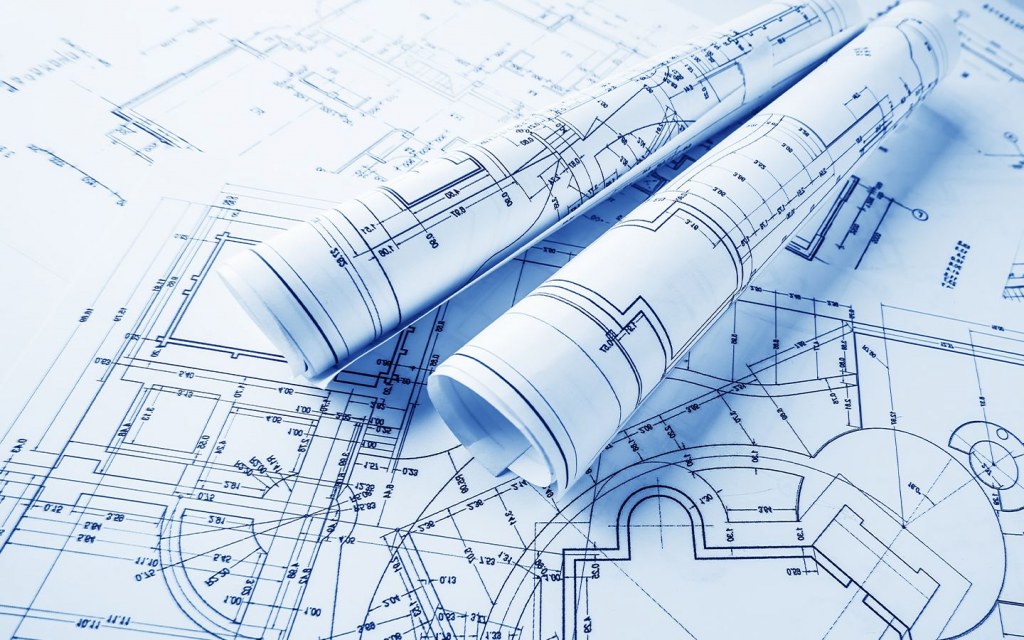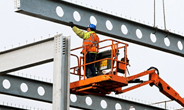Economy

Dodge Momentum drops on moderating data center growth
Written by Laura Miller
October 7, 2024
Slowing growth in data center planning caused the Dodge Momentum Index (DMI) to pull back in September. The index’s decline followed five months of growth since hitting a two-year low in March.
Dodge Construction Network (DCN) reported a DMI of 208.6 in September, a 4.2% drop from 217.7 the month before. Despite a 5.2% improvement in institutional planning, commercial planning contracted 7.8%.
“A surge in data center activity drove much of the recent rapid growth in the DMI – so as planning for that sector moderated over the month, overall commercial planning fell back,” explained Sarah Martin, DCN’s associate director of forecasting.
On the commercial side, planning for warehouses, offices, and stores slowed. Hotel planning, meanwhile, has been accelerating over the past five months and expanded further in September. And while data centers continued to account for the bulk of large projects, their growth rate slowed, according to DCN.
Education, healthcare, and recreational projects drove the September expansion in institutional planning, while religious planning declined.
Despite the index’s monthly decline, Martin pointed out that it “remains at very robust levels.”
Compared to a year ago, September’s DMI was 21% higher, with the institutional segment rising 4% and the commercial segment surging 31%.
“By mid-2025, the Fed’s rate cuts should spur planning projects to reach groundbreaking more quickly – leading to stronger nonresidential activity as 2025 progresses,” Martin added.
The DMI tracks the value of nonresidential construction projects entering the planning stages and typically leads construction spending by about 12 months.


Laura Miller
Read more from Laura MillerLatest in Economy

Architecture billings continue to slide in March
Architecture firms said billings continued to decline in March, according to the latest Architecture Billings Index (ABI) released by the American Institute of Architects (AIA) and Deltek.

Beige Book shows concerns about trade policy
Manufacturing was mixed, but two-thirds of districts said activity was little changed or had declined.

New York state manufacturing index drops again in April
Firms were pessimistic, with the future general business conditions index falling to its second lowest reading in the more than 20-year history of the survey

Construction adds 13,000 jobs in March
The construction sector added 13,000 jobs, seasonally adjusted, in March, but tariffs could undermine the industry.

Supply chains, end-users brace for impact from tariffs
Supply chains are working through what the tariffs mean for them
